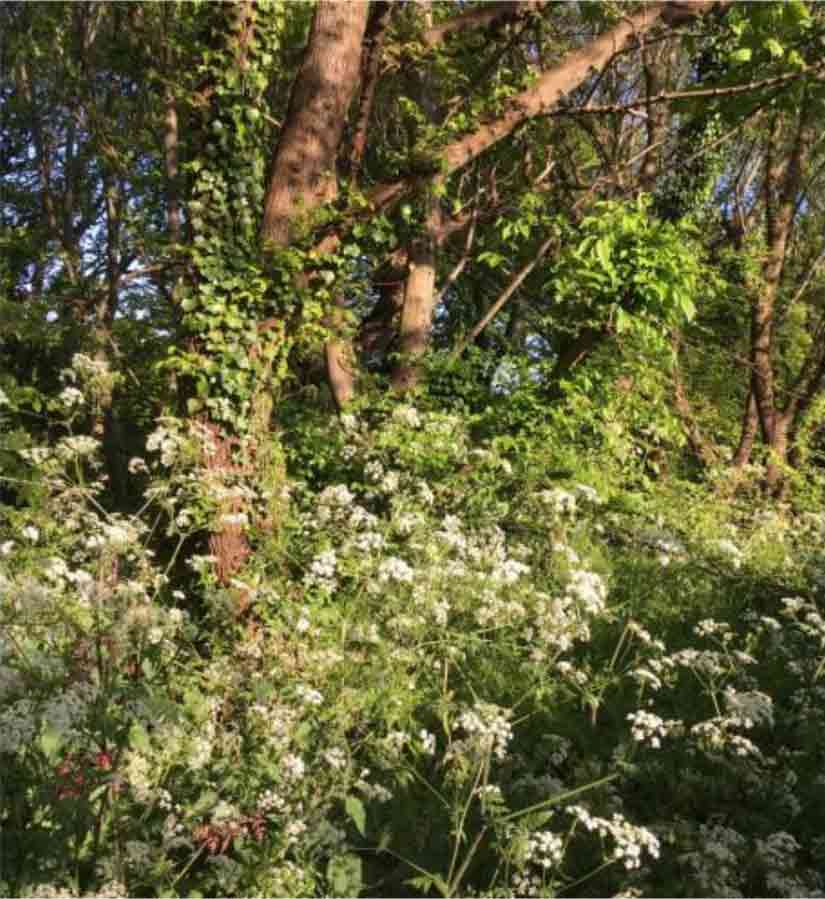QUEEN ANNE'S LACE
In Three Cornered Copse, May is the month of cow parsley. Standing head-high in places, it dominates the forest floor and forms a foaming blanket of white tumbrils beneath the forming tree canopy.
 The buttery, aniseed, (toffee?) scent is everywhere when the evenings and mornings are still and warm. Also known as Anthriscus Sylvestris, and Queen Anne's lace, it is now the third most common plant in mainland UK, named after the short-reigned Queen Anne (1702-1714), who had 17 pregnancies, and no children surviving past the age of two. It was regarded as bad luck to bring into the house, fearing it would cause the early death of those living within.
The buttery, aniseed, (toffee?) scent is everywhere when the evenings and mornings are still and warm. Also known as Anthriscus Sylvestris, and Queen Anne's lace, it is now the third most common plant in mainland UK, named after the short-reigned Queen Anne (1702-1714), who had 17 pregnancies, and no children surviving past the age of two. It was regarded as bad luck to bring into the house, fearing it would cause the early death of those living within.
The domination of this native herb is thought to have been a result of the evolving content of our soil, after years of agriculture enrichment. Paradoxically these plants flourish on rich soil, along with nettles and brambles, and struggle on the weaker pastures, where more diverse species of wild flowers are found to thrive. In Three Cornered Copse we have an abundance of cow parsley, nettles and brambles, which testifies to the quality of the soil in the woods.
As a herb, it is safe to eat, but don't. Cow parsley is very similar in appearance to hemlock, which is highly poisonous, and famous as the execution method chosen by Socrates. Apparently, cow parsley has a flavour similar to chervil, and is often called "wild chervil".
The blossoming of the cow parsley is very short, several weeks only, so by mid-June it has died back, as the woodland canopy thickens.
Our latest work day was on May 13th, where we finished off clearing the vegetation threatening to engulf the pathways near the silver birches. Our clearing has finished now, to leave the nesting areas in peace, and avoid disturbing the young birds. Watch for notices on our boards for the next work day; all are very welcome. No experience necessary.
The philosophers ask, "If a tree falls in the forest, and no-one is around to hear it, does it make a sound?" In October 1987, a great many trees fell in Three Cornered Copse, and there was noise. We're coming up to the 30th anniversary of The Great Storm. If any readers have pictures, in any form, of the damage in the copse, please get in touch; we'd love to form a collection, to remember the event.
Please email:
info@threecorneredcopse.org.uk.
Simon Baxendale
|

